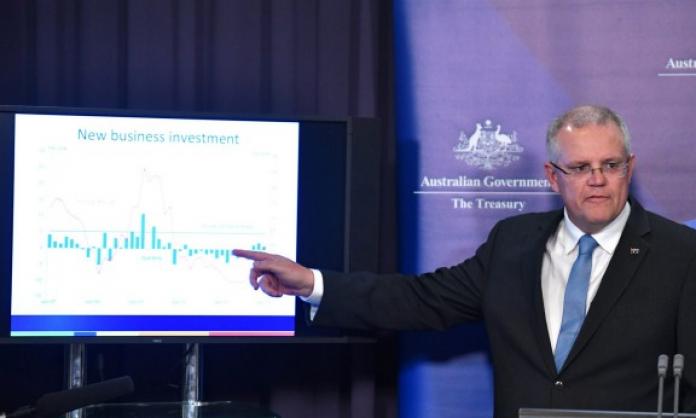We have been regaled of late with news of “better days ahead” finally arriving. Business confidence – a gauge of how business owners and purchasing managers feel this week or this month – is up. Jobs growth is strong. There are high expectations for non-mining capital investment, which has been a drag for some time. GDP continues to increase. And the national income recession associated with the winding down of the mining investment boom and the collapse in commodity prices is definitively over.
Is this the economic transition we’ve been told about? Perhaps. But growth continues to be driven primarily by household consumption, which contributed two-thirds of the GDP increase over the past year.
The problem is, while consumption continues to grow, wages remain stagnant. The Australian Council of Trade Unions noted on 6 September, “Labour’s share of national income is at its lowest level since 1964. Meanwhile, company profits grew to a five year high of 27.3 percent”. Wage stagnation has led to increasing mortgage stress across the country.
According to research and consulting firm Digital Finance Analytics, more than one-quarter of households have to dig into their savings or draw on a credit card to get by every month.
This is now the greatest vulnerability in the economy. For years, the main discussion was about what would be the drivers of growth once mining investment fell off the cliff. To date, residential construction and household spending have led the way – but they have been possible only through dramatically increased borrowing and reduced savings.
Over the past five years, the household savings rate has halved; workers are chewing into their existing resources to pay the bills. Over the same period, the household debt to income ratio has risen from 170 to 190 (meaning that households have gone from being $170 in debt for every $100 earned to being $190 in debt). When the current long economic expansion began, the debt to income ratio was about 70.
The other main driver of growth has been government spending. In Victoria and NSW, this has been enabled primarily by massive revenues from state property taxes and stamp duties resulting from the debt-fuelled property boom – a virtuous circle dependent at each rotation on rising asset prices and the availability of cheap credit.
But there is only so long that borrowing can increase, so far that savings can be drawn down and so high that residential property prices can rise. It’s also not out of the question that economic growth in the West will improve and interest rates begin to rise, which would add hundreds of dollars a month to mortgage repayments.
Without sustained wage growth, more and more workers could be pushed into financial stress as savings continue to be drawn down and as the debt burden becomes increasingly onerous.
The federal treasurer, Scott Morrison, isn’t wholly blind to this fact. On the ABC’s Insiders program, he even appeared to urge employers to start using their increased profits to fund wage rises. But his government backs wage cuts, such as the slashing of penalty rates, and relentlessly targets the unions that dare to fight for a bigger share of the economic pie, which makes matters worse for hundreds of thousands of people.
Further, Morrison went so far as to suggest that workers eating into their savings was a sign that they have “confidence” and are out there spending it up. When ratings agency Moody’s reaffirmed Australia’s AAA rating and made some positive remarks about the state of the economy, the treasurer beamed:
“That’s how it works! You make the right choices, you pursue economic growth; you give businesses incentive to expand and innovate; and Australians directly benefit from the tangible opportunity created. This is the economics of opportunity.”
The man thinks he is some sort of tooth fairy, delivering the silver to the increasing number of people who can’t afford dental. While a few lousy coins may continue to appear in the form of economic growth, the explanation for their appearance is dubious.
And there is no getting around the real problem: with debt increasing and wages stagnant or decreasing, eventually, something has to give.








